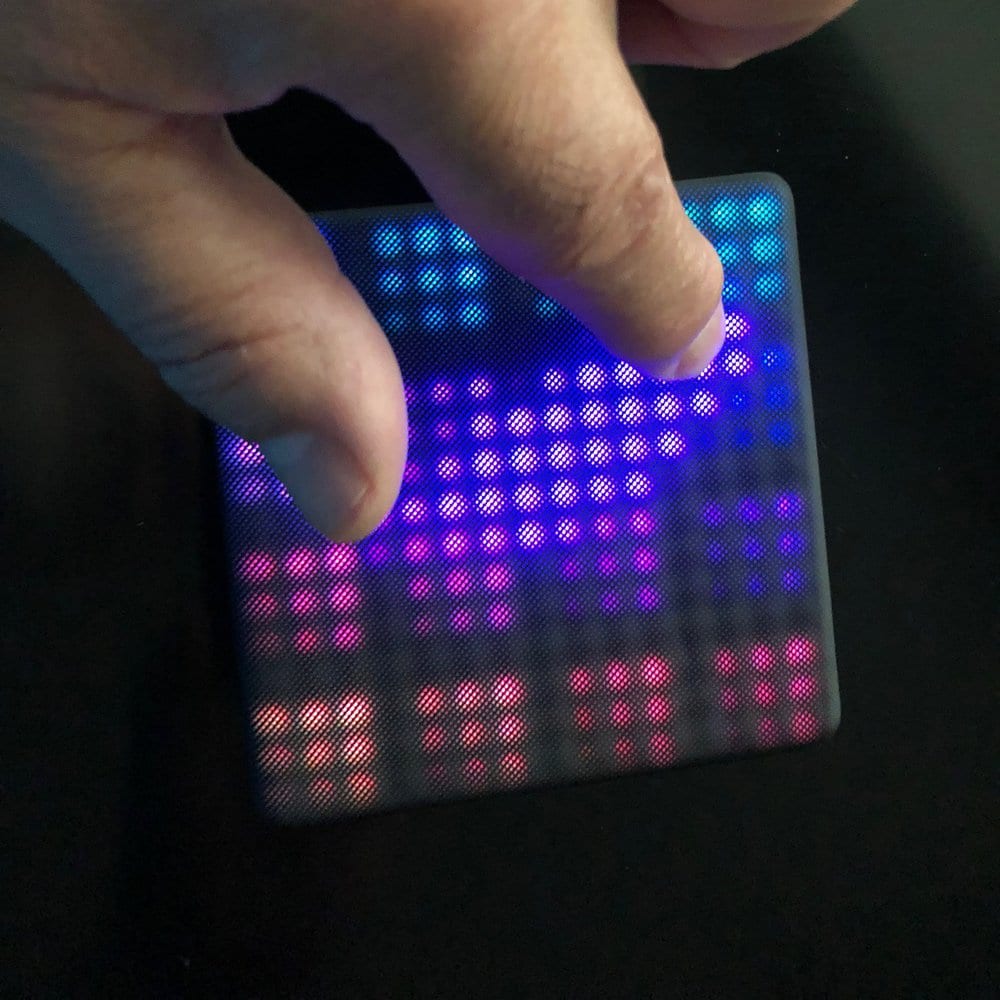MIDI (Musical Instrument Digital Interface) has been around for 34 years, primarily as a way to connect external keyboards to computers. The Roli Lightpad Block M (US$199) is something completely different — it’s a small (3.7 x 3.7 x .86 inches / 94 x 94 x 21.8 mm) block that can be attached to a number of other Roli devices, but is a powerful standalone MIDI controller as well. A skilled musician could do wonders with the Lightpad Block M, but even a non-musician can easily coax fantastic sounds out of the box.

Design
The Roli Lightpad Block M is deceptively plain looking. The top surface of the controller has a touch surface with small bumps (the M stands for microkeywaves, the name for these undulations) on it for haptic feedback about where your fingers are. Around the sides are magnetic DNA couplers that connect the Lightpad Block M to other Roli products, including the Seaboard keyboard, Live Block and Loop Block.

The Lightpad Block M is equipped with a USB-C port for charging, and it runs up to 4 hours on a 2-hour charge. Like most other MIDI devices, it can use the USB-C port to connect to a computer but also includes Bluetooth LE for wireless connectivity.
Embedded under those ripple-like bumps on the top of the Lightpad Block M are LEDs that light up in a variety of colors and intensities, Those lights supply other feedback, like an expanding “blue wave” to indicate that you need to pair the Block with another device. Pairing is easy, particularly with the free Roli Play app providing instructions.
Roli Play is designed to teach the “5D Touch” gestures used to play the controller with the fingers, play around with various instruments, create songs by laying down a drum beat and adding instruments, discover more of the Roli devices and apps, and view recordings of songs that you’ve made. Roli also provides an app called Noise (free with in-app purchases).
You’re not limited to just the Roli apps, though. As a MIDI device, the Lightpad Block M can be used with just about any MIDI-controlled app or device. Roli calls out Equator Player, Ableton Live Lite, Strobe2 Player, Tracktion Waveform, ROLI Dashboard and Max MSP as all being compatible, or you can use Apple’s very own Garage Band or Logic Pro apps.

Function
While I’m not a musician, I was able to start playing some pretty sophisticated (at least in my mind) tracks, using the lights, app, and other cues to switch between notes, instruments and scales. The sound files included with both Roli Play and Noise are vast, and provide a number of sounds that are fun to explore.
I found Roli Play to be the best way to learn how to use the Lightpad Block M. A quick tutorial shows how to use the various gestures — strike (tap), press (tap and hold), glide (swipe left and right), slide (swipe up and down), and lift. Those five gestures are all you need to know, and the LEDs on top of the Block M provide great feedback.
Play gives you a set of genres to choose from when creating a song — classical, electronic, grime, pop, rock, and urban. Each genre comes with a set of instruments. Next, you’re introduced to the SongDial, a clock-like interface on the iPhone that represents your song with drum, bass, chord and lead tracks. Each measure of a song is indicated by a single clockwise rotation around the SongDial. Individual tracks can be played so you can fine-tune them, and you can create loops that can be launched at different times in the track that’s playing.

The article says that, according to “market estimates,” the Azrieli Mall Group, under the direction of Arnon Toren, is in preliminary negotiations to establish a first store for the electronics giant in the mall that will open in the new [Azrieli tower]. However, Globes does note that no transaction has been signed, which means the opening of such a store isn’t definite.
The Azrieli Center (pictured) is a complex of skyscrapers in Tel Aviv. At the base of the center lies a large shopping mall.
Apple currently has 503 retail stores in 24 countries and an online store available in 39 countries.
Like this article? Consider supporting Apple World Today with a $5 monthly Team AWT membership.
